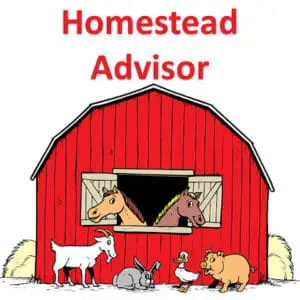So, you’re starting a homestead. What do you do first? There are so many things to do. So many things to install. So many things to build. So many things to plant. It can certainly seem daunting.
One thing for sure is that you will want to grow food. Why would you want a homestead if you’re not going to try to grow at least some of your food? That means you’ll probably plant a garden, some fruit and nut trees, and maybe some grapevines or blackberries or blueberries.
What should you plant first? Short answer… Trees.
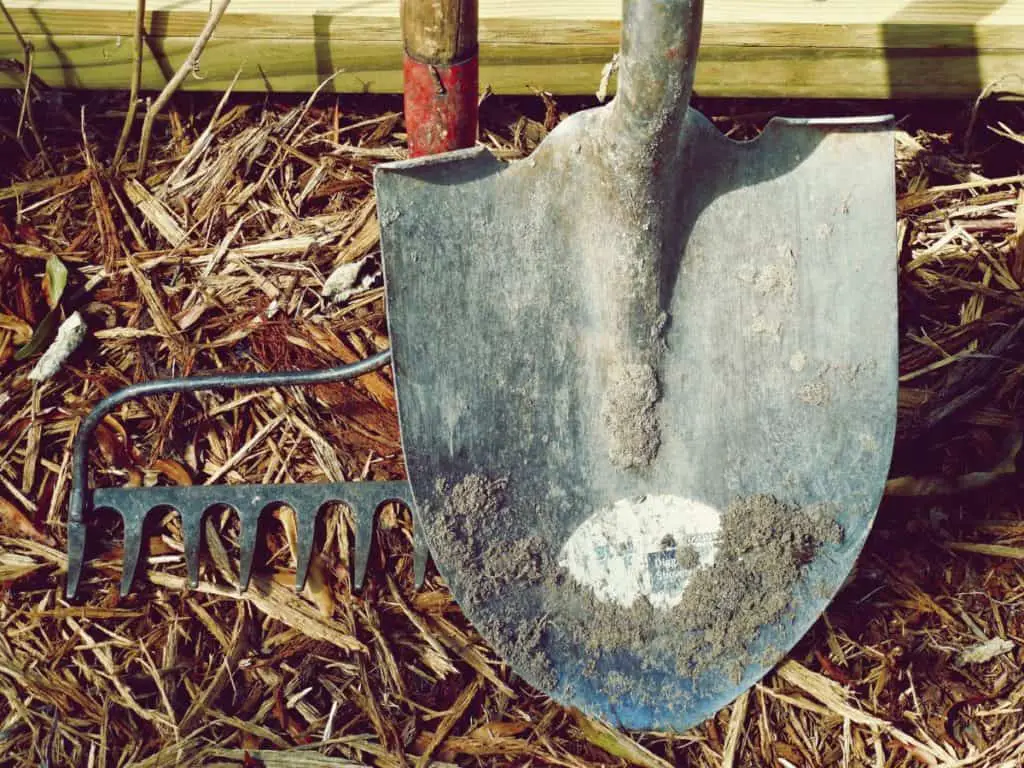
So why trees? Well, trees take a long time to get established and start to bear fruit (or nuts). Most fruit trees start bearing around 5 years after they are started in the nursery.
That doesn’t necessarily mean it will take 5 years for you to see any fruit because when you buy the tree, it could be 2 or 3 years old. In fact, I’ve had trees bear the first year after I planted them. Not a lot of fruit, but enough to get excited about and give me an idea of what to look for in years to come. I’ve even seen fruit hanging on trees that were in containers, in the nursery. Actually, that’s pretty common.
So, that’s why my advice (isn’t that why I’m here?) is to start with fruit and nut trees. Why? You shouldn’t concentrate on a garden that will produce this year and neglect something that will take several years to get a yield from.
Start the ball rolling first on your fruit and nut trees, then plant your garden. Fruit trees should be planted in winter anyway when you have very little to do in the garden. Don’t forget nut trees. Most of them will take even longer to produce.
Now, as far as what type of fruits to concentrate on, I would say plant what you eat. It is hard to beat a fresh apple, peach, nectarine or pear. Go to your state Agricultural University website. For me, it was Texas A&M (sorry UT fans). The information they have there is invaluable. Find out from your state Ag guys what variety of tree does best in your neck of the woods. What grows well in ETX may not do worth a darn in MD.
Buying The Trees
After you see what will do well in your area, I strongly suggest you always buy your trees from an established nursery close to you. They will have the best selection, and will generally be knowledgeable about which trees do well in your area.
Also, and this is important, buy the biggest trees you can find. By that, I mean that you should look for trees in a 5 or 6- gallon container. I know… they cost more, a lot more. But you are saving yourself 2 to 3 years of growing time over the spindly bare root tree you’ll find in the Big Box Stores.
How much is 2 years worth to you… 10 bucks? 20 bucks? That’s about the difference you will pay between a 5-gallon tree and a twig. Well worth it!
By the way, always pick a reputable nursery. Someone you know and trust. Bob Wells Nursery is my nursery of choice. They have over 3000 plants and trees and should have a variety that would do great in your area. Bob Wells is a local nursery near me, but they ship just about everywhere in the continental U.S. and I know they have something you’ll like!
And, the folks at Bob Wells Nursery have partnered up with me to offer you a 10% discount on your purchase. Just use the Discount Code: “TP2”

Then… plant them “right”. The old saying around here is “dig a 20-dollar hole for a 10-dollar tree” (that may lose something in translation). In other words, have your expensive amendments (compost, peat moss, and good topsoil) ready to mix together and put in the hole with the root ball. Don’t just dig a hole, plant the tree and cover it with the soil from the hole. That usually doesn’t work out all that well.
Planting Tips
Most trees are grafted, and basically you want to keep the graft (the little knot on the trunk that is just above the soil line) about 3″ above the soil when you plant. The graft needs to be above ground so suckers don’t grow from the root-stock. One way to remember how to do this is the old saying… “Plant it high, it won’t die… Plant it low, it won’t grow”.
If you bought a container-grown tree, just plant it at the same level as it is in the container it came in. No deeper. This is something to remember when you plant just about anything. Except for tomatoes. Plant tomatoes deep. They, along with a few other plants, will root on any part of the stem that touches the ground. Planting tomatoes deep will result in a much better root system…
But, I digress. Back to fruit trees…
Plant your trees at the correct depth, with the graft well out of the soil. Water it in well. This will seal the soil around the roots so you won’t have any air-gaps. The roots don’t like to be exposed to air. I highly recommend installing a drip irrigation system. Not only will it ensure that your trees are watered on a timely basis, but it saves you a lot of time standing around with a water hose.
If you plant your trees in winter, the initial watering will be enough for a few days, so you don’t have to have a drip system installed immediately, but you should surely consider it. It is not very expensive, and it takes the guesswork and manual labor out of keeping them watered well. You can find more information on how to build a Drip Irrigation System HERE.
You also want to make sure to plant them in a well-drained area. Around here we have a lot of clay. Clay holds water like a bowl. If the roots stay soggy, it can cause “root rot” which is probably a lot like athletes foot in humans, but unlike athletes foot, root rot can be fatal. I usually plant on a slope of some sort, but around my property, everything is on a gradual slope one direction or the other.
Varieties of Fruit Trees
Now, what type of trees? Well, what do you like to eat? Plant something that you and the rest of the family will enjoy freshly picked. I will say that some trees can be a bigger pain in the pa-tootie than others. Peaches and plums, for example, will need to be sprayed every 10 days to 2 weeks with an insecticide and fungicide.
A combination spray makes that a little easier as it contains both the insecticide and fungicide together and you kill 2 birds with one stone. HERE (my Amazon affiliate link) is what I mean by “combination spray”.
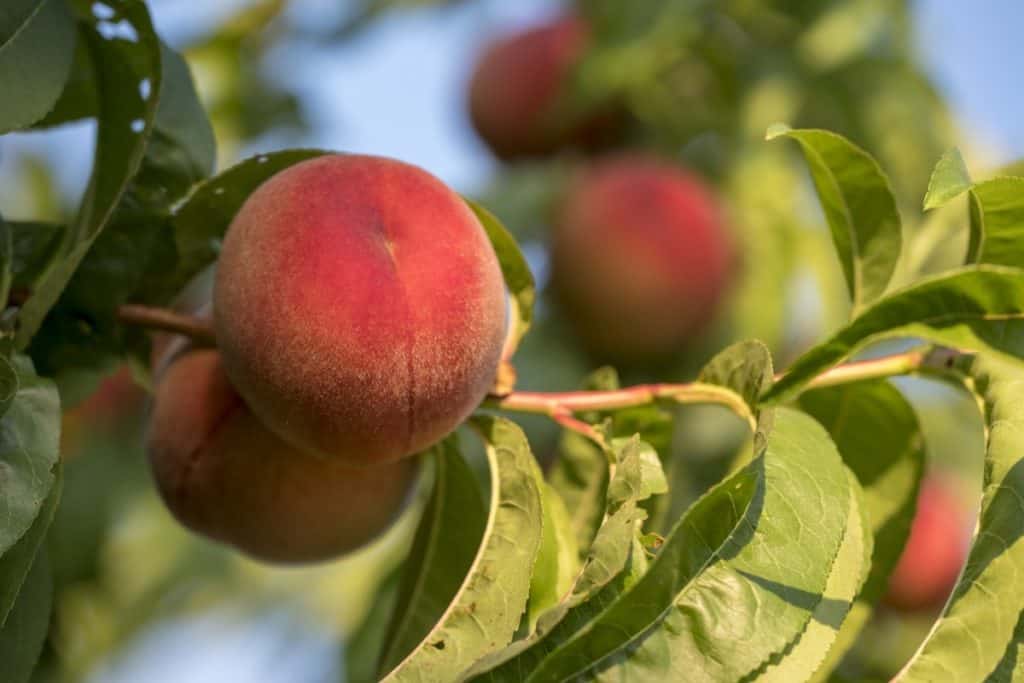
Other varieties are much less care intensive. I have had 3 pear trees for 25+ years and have done very little to them. They produce abundantly just about every year, without expensive (and unhealthy) sprays. Also, I’ve found that persimmons do well with hardly any care.
In my experience apples are just about as carefree as the pears, but are a lot more prone to disease. Apples don’t do extremely well in ETX, but they may do great if you are in a cooler climate.
I planted several apple trees a few years ago and surprisingly got a small crop the following year. Not huge fruit, and not a huge crop. But the trees were still small, and I was very proud of what they (and I) accomplished. So, I guess they can do pretty well in TX in some years.
Other years, they are a bust. It’s a pretty cool feeling to walk around your place, see some ripe fruit hanging on a tree, and say “I don’t mind if I do”. Sweet rewards.
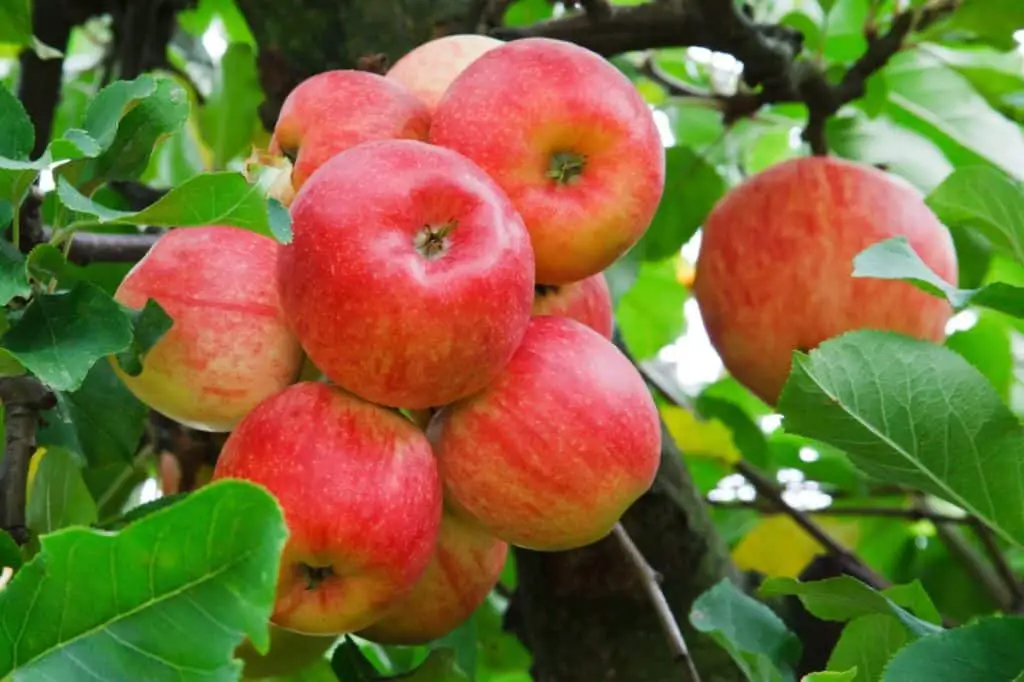
Protect Your Trees
If you live where the summers are brutal, then for the first year or two, you might want to put up a little shade for them. 100F heat can burn a young tree, so shade cloth might be just what they need. You can get a closer look at shade cloth HERE (my Amazon affiliate link).
In 2011 we had 82 days in a row of 100F or more degree heat. It was awful! I never want to go through that again. I kept some newly planted fruit trees alive with shade cloth. I don’t think they would have lived without using shade cloth.
Fruit trees do need to be pruned. First, they need to be pruned before you plant them. Yet another great reason to buy from a nursery and not a big box store. Ask the nursery guy (or girl) to prune them for you before you leave. Then they will need to be pruned as the years go by to stimulate fruit production.
There are a lot of YouTube videos on this and a lot of places to go and read about how to prune fruit trees. Your state AG Extension Service will have a ton of info and lots of pictures showing you how to do that. I won’t go into it now. You need some trees to stick in the ground first, right?
So, decide what trees you want to plant (researched well as to your location and climate). Try to buy them from a reputable nursery in your area, not a big-box store. And, buy them in the largest containers you can find (and afford). You won’t be sorry.
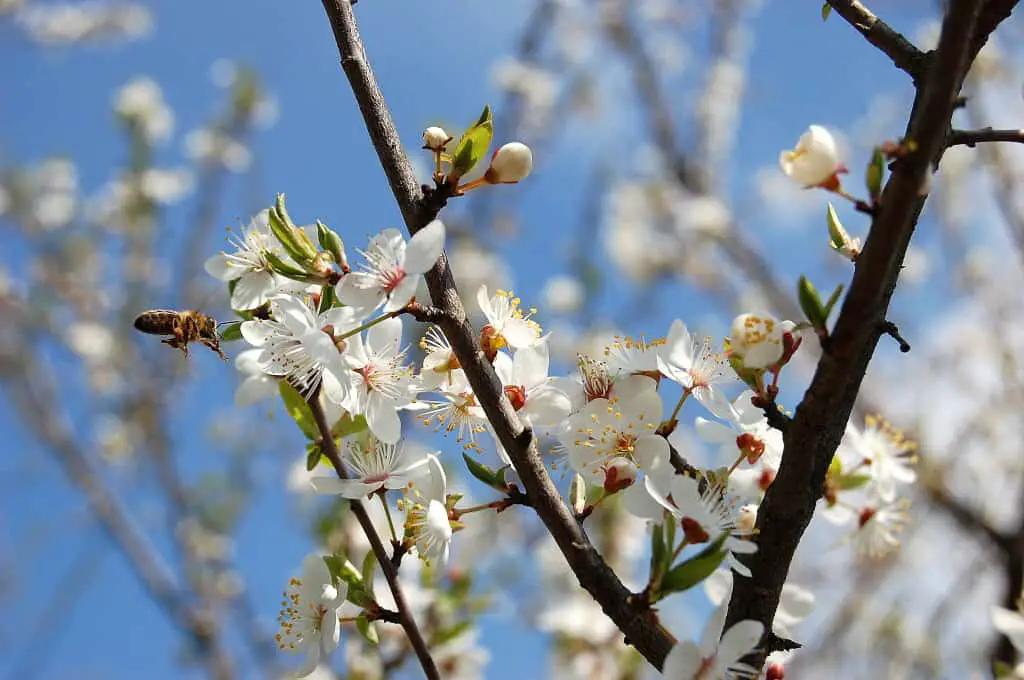
You may even lose some, but it should be a small percentage, and will usually be to circumstances beyond your control like the weather, or perhaps gophers, voles, deer or some other critter. I haven’t had any deer problems, but you can build a cage (small fence) around them to protect them from deer till they are tall enough to be out of reach.
Final Thoughts
A wise man once said, ” Put your outdoor work in order and get your fields ready; after that, build your house.” That’s found in Proverbs 24:27, and it’s hard to argue with someone known as the wisest man in history.
Today, most “homestead matriarchs” wouldn’t let us guys get away with that. I would imagine the missus will want the house first… then the garden and orchard. Not sure how ‘ol Solomon got away with it since he had hundreds of wives, but I admire him for having the guts to say it!
So, get crackin’. Plant some trees that will give you years, and perhaps decades of enjoyment… and put food on your table. With the price of food going up daily, this one thing could be one of the biggest money-saving things you do… Not to mention the level of self-sufficiency and satisfaction it will bring to you and your family.
Also, I have around 800 videos on my YouTube Channeldealing with just about every aspect of Homesteading and Emergency Preparedness. You can find them all HERE.
I know your time is valuable. Thanks for spending a little of it here.
